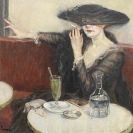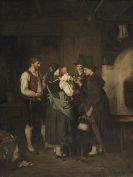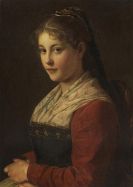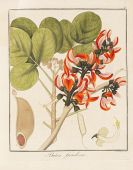
Eduard Schleich d. J.
München
1853 -
München
1893
At the age of fifteen Eduard Schleich became a student in the history painting class at the Munich academy, which he left only a short time later. During the subsequent years he produced numerous landscapes under the influence of Carl Rottmann, Thomas Fearnley, Christian Ezdorf and Christian Morgenstern, which he painted from memory and from sketches, drawn during extensive hikes in the Alps.
The early wide-format paintings, whose motifs are taken from the immediate surroundings of Munich, show a very dark palette. Schleich traveled to northern Italy in 1843 together with Christian Morgenstern, but this trip did not seem to have any influence on his style worth mentioning. His style changed in 1848, when the artist increasingly studied Dutch 17th century painting. His palette became warmer and was strongly influenced by Rubens regarding color and composition.
In 1851 the artist traveled to Paris and London with Carl Spitzweg and other artists, visiting the world exposition. After his return, his works had a more sketchy style reminiscent of the Barbizon school, members of which he had met in France.
In the following years Schleich produced his famous light-flooded nature paintings of the Upper Bavarian lake region, for which he received great respect during his lifetime and was honored as the founder of the Munich school of landscape painters. The artist was subsequently entrusted with the organization of the international art exhibition in Munich in 1869. In 1872 he undertook a last major journey, which took him to Rome.
The renowned painter died in Munich in 1874, aged 62.
Would you like to sell a work by Eduard Schleich d. J.?
Infos for seller





